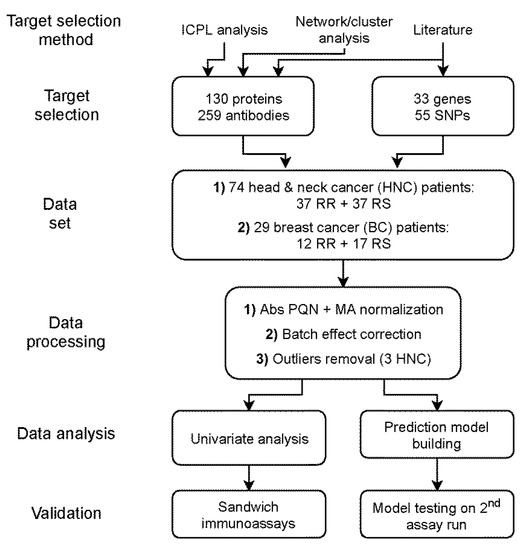
Cancers, Vol. 12, Pages 753: Molecular Profiling for Predictors of Radiosensitivity in Patients with Breast or Head-and-Neck Cancer
Cancers doi: 10.3390/cancers12030753
Authors:
Kimi Drobin
Michal Marczyk
Martin Halle
Daniel Danielsson
Anna Papiez
Traimate Sangsuwan
Annika Bendes
Mun-Gwan Hong
Ulrika Qundos
Mats Harms-Ringdahl
Peter Wersäll
Joanna Polanska
Jochen M. Schwenk
Siamak Haghdoost
Nearly half of all cancers are treated with radiotherapy alone or in combination with other treatments, where damage to normal tissues is a limiting factor for the treatment. Radiotherapy-induced adverse health effects, mostly of importance for cancer patients with long-term survival and may appear during or long time after finishing radiotherapy, are depending on the patient radiosensitivity. Currently, there is no assay available that can reliably predict the individual’s response to radiotherapy. In the present study, we profiled two radiosensitive study sets from breast (n = 29) and head-and-neck cancer patients (n = 74) that included patients and matched radioresistant controls. We studied 55 single nucleotide polymorphisms (SNPs) in 33 genes by DNA genotyping and 130 circulating proteins by affinity-based plasma proteomics. In both study sets, we discovered several plasma proteins with the predictive power to find radiosensitive patients (adjusted p < 0.05) and validated the two most predictive proteins (THPO and STIM1) by sandwich immunoassays. By integrating genotypic and proteomic data into an analysis model, it was found that the proteins CHIT1, PDGFB, PNKD, RP2, SERPINC1, SLC4A, STIM1, and THPO, as well as the VEGFA gene variant rs69947, predicted radiosensitivity of our breast cancer (AUC = 0.76) and head-and-neck cancer (AUC = 0.89) patients. In conclusion, circulating proteins and a SNP variant of VEGFA suggests that processes such as vascular growth capacity, immune response, DNA repair and oxidative stress/hypoxia may be involved in an individual’s risk of experiencing radiation-induced toxicity.

Δεν υπάρχουν σχόλια:
Δημοσίευση σχολίου